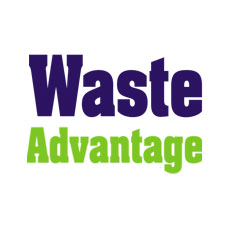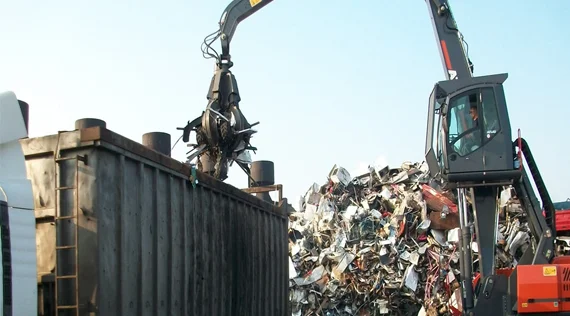Giving Electric Vehicle Batteries a Second Life: Best Practices for a Sustainable Transition
April 16, 2025 12:01:33 AM
Transitioning to electric fleets requires more than individual effort—it demands collaboration across the ecosystem.

SEATTLE (Waste Advantage): Zero-emission fleets are an exciting prospect for some and a regulatory pressure for others. Regardless, the pros are clear: cleaner air for drivers and communities, quieter streets and reduced fuel costs. Clear too are the cons: infrastructure gaps, large upfront costs, vehicle charging logistics and range anxiety. But these perceived downsides should not be obstacles to electrification.
A core area of concern for all fleet operators is the long-term value of their investment in heavy-duty electric vehicles (EVs)—particularly the batteries. What happens when an EV battery reaches the end of its life in the vehicle? And how can companies and municipalities ensure these initial investments make both long-term economic and environmental sense?
The answer to both questions lies in a forward-thinking approach to EV fleet management. By considering the entire lifecycle of an electric vehicle and its battery, operators can lower costs, maximize returns and support their sustainability goals.
Below are four best practices to help guide waste and recycling leaders in maximizing the value of their EV investment by valuing and managing batteries for the long term, including giving them a second life.
#1: Treat Electric Trucks as Long-Term Fleet Assets
Maximizing the total cost of ownership of electric trucks demands longer-term thinking than their traditional diesel counterparts. Upfront costs may be higher, but operating costs can be lower. With proper planning, they can deliver significant savings over time through reduced fuel, maintenance and more.
The EV battery represents both the heart of the vehicle and its most valuable component. A battery’s efficacy for vehicle use may decline after seven to 10 years, depending on how it is charged and driven. It will typically be retired with about 70 to 80 percent of its original capacity remaining. While this is not sufficient for the demands of daily routes, it is ideal for another 10 years as energy storage.
The goal is to treat your fleet in a manner that maximizes battery health and optimizes energy use. Good driving and charging practices can lengthen a battery’s useful life, which increases the ROI on your investment. It also results in a battery that is more likely to have a successful post-driving career and therefore a greater value at the end of its life.
Further, innovative companies will also actually take ownership of the battery over its lifetime and then lease the battery back to operators on a manageable monthly basis, while guaranteeing its performance levels. This reduces operational risk as well as financial risks by removing upfront costs and future battery replacement costs for operators.
#2: Leverage Second-Life Solutions for Batteries
EV batteries can be repurposed as stationary storage or mobile charging units. When installed at an electric fleet depot, the second-life battery system can help stabilize energy costs by making low-cost stored electricity available during high-cost peak demand periods.
Portable second-life power systems can provide flexible, cost-effective fleet charging in areas with limited charging infrastructure or network capacity, such as cleaning up after a music festival. These portable units power other types of equipment as well, from cranes to film sets—basically, anything that a diesel generator might have powered.
Stationary battery systems also help reduce energy costs. They store renewable energy when solar or wind power is plentiful and release it during peak usage periods when utilities often tap fossil fuels sources. Some depots have installed solar panels to charge their second-life battery system creating a microgrid and providing a level of energy independence for a fleet as well. These stationary and portable systems are typically managed by a partner, allowing the fleet team to remain focused.
Second-life batteries also contribute to what is known as the “circular economy.” Recyclers are familiar with the concepts of reduce, reuse, recycle. Circularity gets more value from an item before it is recycled. This reinforces the broader sustainability narrative for your electric fleet, which is appealing to investors and communities alike.
#3: Financing Terms Improve When the Full Lifecycle is Kept in Mind
While government incentives are available to help haulers adopt zero-emission fleets, private-sector financing for electric fleets has been slower to evolve. To make economic sense, lenders need to adopt a full lifecycle view. This includes factoring in the “residual value” of batteries beyond simply their initial vehicle use.
Global nonprofit CALSTART offers a helpful Innovative Financing Toolkit that includes strategies for calculating residual values of electric vehicles. Our company is a contributor to the Toolkit, and advocates for an industry standard that makes financing more accessible by improving lender confidence in EV assets.
Kabir Nadkarni, CALSTART’s EV Industry Assessment Specialist, highlights the importance of residual value: “Understanding residual values isn’t just about predicting the future, it’s about unlocking financing for zero-emissions car, trucks and buses today. With a $2 to 3B second life battery market emerging, residual values of used electric vehicle components are proving to be competitive with gasoline vehicles. Leading companies are sending a clear market signal that electric vehicles hold their worth.”
By considering residual value, businesses can secure more affordable financing options while preparing for second-life opportunities.
#4: Collaborate Across the Ecosystem
Transitioning to electric fleets requires more than individual effort—it demands collaboration across the ecosystem. Waste and recycling agencies and authorities will need to work closely with manufacturers, charging infrastructure providers, battery repurposing specialists and others to create integrated solutions. Working with flexible partners who offer modular solutions and bring long-term thinking to the relationship can help with a long-term battery lifecycle management strategy, turnkey second life solutions, experience with residual value and relationships that can help meet sustainability goals and maximize ROI.
Bringing the Tapestry Together
As the waste and recycling industry moves toward a zero-emission future, heavy-duty EVs offer an opportunity to help redefine fleet operations. By viewing EV batteries as long-term assets, exploring second-life applications, leveraging financing strategies that include battery residual value, and fostering collaboration, businesses can unlock the full potential of these investments.
Repurposing EV batteries not only extends their value but also supports broader environmental objectives, making electrification a win-win for both the industry and the planet. With innovative solutions and a commitment to best practices, waste and recycling leaders can pave the way for a cleaner, more sustainable future.
Courtesy: www.wasteadvantagemag.com
 By
By 



